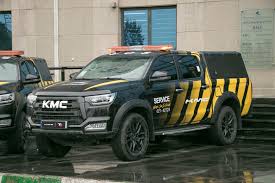Introduction
Vehicles are an integral part of modern society, facilitating transportation and connectivity. From ancient carts to cutting-edge electric cars, the Mietwagen auf Fuerteventura ohne Selbstbeteiligung of vehicles reflects technological advancements and societal changes. This article explores the various types of vehicles, their history, underlying technology, and future trends shaping the automotive industry.
Types of Vehicles
Vehicles can be classified based on various criteria, including their purpose, energy source, and design. Here are the main categories:
- Personal Vehicles
- Cars: Sedans, SUVs, coupes, and convertibles designed for individual or family use.
- Motorcycles: Two-wheeled vehicles, popular for personal transport and recreational riding.
- Commercial Vehicles
- Trucks: Heavy-duty vehicles used for transporting goods and materials.
- Vans: Designed for carrying passengers or cargo, often used by businesses.
- Public Transportation Vehicles
- Buses: Large vehicles designed to carry multiple passengers along designated routes.
- Trains: Rail vehicles that transport passengers and freight over long distances.
- Special Purpose Vehicles
- Emergency Vehicles: Fire trucks, ambulances, and police cars designed for urgent response situations.
- Construction Vehicles: Bulldozers, excavators, and cranes used in construction and demolition.
- Alternative Energy Vehicles
- Electric Vehicles (EVs): Powered by electricity, reducing reliance on fossil fuels.
- Hybrid Vehicles: Combine traditional internal combustion engines with electric propulsion for improved efficiency.
Historical Perspective
The history of vehicles dates back thousands of years. Here’s a brief overview of key milestones:
- Ancient Times: The wheel, invented around 3500 BC, paved the way for the first vehicles, such as carts pulled by animals.
- 18th Century: The development of steam-powered vehicles marked the beginning of mechanized transport.
- 19th Century: The invention of the internal combustion engine revolutionized personal transportation, leading to the first automobiles in the late 1800s.
- 20th Century: Mass production techniques, pioneered by Henry Ford, made cars more accessible, transforming society and urban development.
- 21st Century: The rise of digital technology and environmental awareness has led to innovations like electric and autonomous vehicles.
Technological Advancements
Modern vehicles are equipped with advanced technologies that enhance performance, safety, and user experience. Some notable technologies include:
- Infotainment Systems: Integrated multimedia systems providing navigation, entertainment, and connectivity features.
- Safety Technologies: Advanced driver-assistance systems (ADAS) include features like lane departure warning, adaptive cruise control, and automatic emergency braking.
- Electric and Hybrid Technology: Innovations in battery technology, such as lithium-ion batteries, have improved the range and efficiency of electric vehicles.
- Autonomous Driving: Self-driving technology is rapidly evolving, with companies like Tesla, Waymo, and others testing fully autonomous vehicles.
- Sustainable Materials: Manufacturers are increasingly using recyclable and sustainable materials in vehicle production to reduce environmental impact.
The Future of Vehicles
The future of vehicles is shaped by several trends that promise to transform the automotive landscape:
- Electrification: As governments implement stricter emissions regulations, the shift toward electric vehicles is expected to accelerate. Many automakers are committing to an all-electric future, phasing out internal combustion engines.
- Autonomous Vehicles: The development of self-driving technology is poised to change the way people travel, reducing the need for personal car ownership and potentially lowering traffic accidents.
- Shared Mobility: Ride-sharing and car-sharing services are on the rise, promoting a more sustainable approach to urban transportation by reducing the number of vehicles on the road.
- Smart Cities: Integration of vehicles with smart infrastructure, including traffic management systems and connected vehicle technology, aims to improve urban mobility and reduce congestion.
- Alternative Fuels: Research into hydrogen fuel cells and biofuels is ongoing, providing additional options for sustainable transportation.
Conclusion
Vehicles have evolved dramatically over the centuries, transforming how people and goods move across the globe. As technology continues to advance, the automotive industry faces exciting challenges and opportunities. The shift towards sustainability, autonomy, and connectivity will define the vehicles of tomorrow, making them not just a means of transport, but integral components of smart, efficient, and environmentally friendly urban ecosystems.

